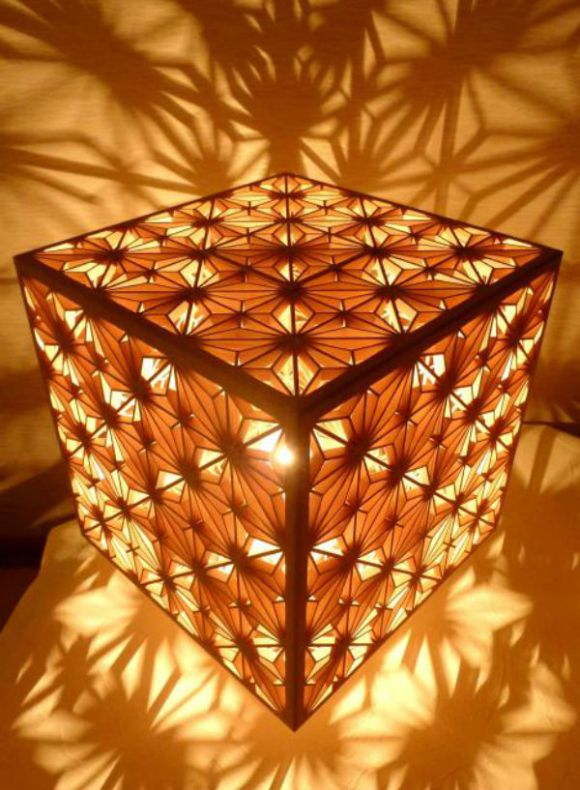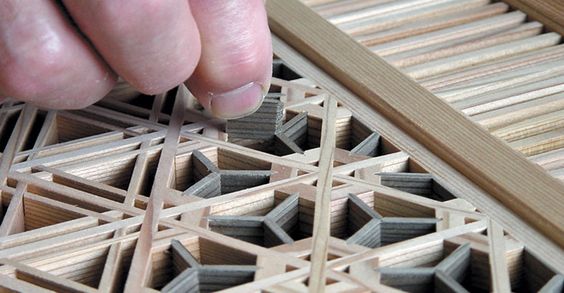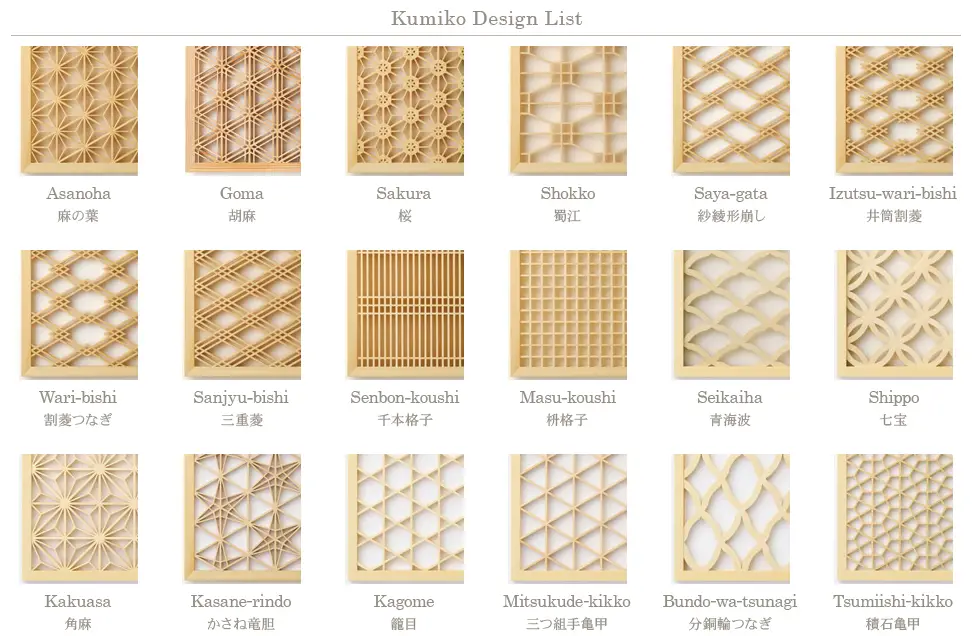Kumiko is a delicate art of assembling small pieces of wood without using nails. The pieces of wood are drilled or shaped using hand tools - planes, saws, chisels - and then assembled one by one to form delicate patterns. The art originated in Japan during the Asuka period, 1500 years ago, and has since been continually perfected and passed down from generation to generation of Japanese woodworkers.

An art that requires great skill and fine execution
Kumiko was used to decorate partition walls and sliding doors in traditional Japanese houses. As houses with modern architecture replaced traditional ones, the art began to be used to make other decorative objects which, combined with light, create a fairy-tale atmosphere.
Those who practice the art of Kumiko need to be skillful and skilled. To make the delicate patterns, the cuts in the wood can be as small as 1.5 mm and must be made very accurately. These cuts are then sanded and arranged to fit the pattern perfectly. For pattern making, dimensions of 0.1 mm are not unusual. Wood has its own characteristics and it is harder to work with it the thinner it gets. It takes in-depth knowledge and a lot of experience to choose the right one and work it properly.


Kumiko models
There are over 100 original designs made using this method, but the actual number of designs is much higher because, over time, other designs have been created by combining the original ones. Sometimes over 100,000 pieces of wood can be used to make the delicate patterns.
Original Kumiko models are divided into 2 categories. Hishi Kumiko or diamond shape are designs with rounded shapes, floral patterns made of curved lines. Koshi Komiko are grid patterns, geometric shapes made of straight horizontal and vertical lines.
In the past, only hand tools were used to make the designs. There are still craftsmen who respect tradition and make patterns using the same techniques as hundreds of years ago. But there are also modern approaches to this technique. The wood is machined with high-performance computerized machines before being assembled so sub-millimetre machining is no longer a challenge.


Traditional Japanese art at the Milan Furniture Fair
The modern world, with its automated techniques and major changes in construction and architecture, is endangering Japanese woodworking traditions. That's why the craftsmen are trying to adapt so that the woodworking tradition does not disappear. It is the duty of the young descendants of traditional crafts families.
"Tradition can only survive through revolution", says Yuji Kuroda, the third generation of carpenters in Kuroda family. This family has adapted to the modern world and has gone on to make Kumiko art known throughout the world, even being present at the Milan Furniture Fair.



































Great article! Many thanks for the article and photos!
And we thank you for following us!